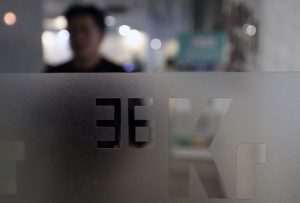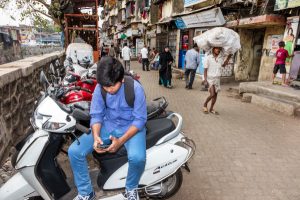Like most parents, I try to limit my kid’s screen time. But screens are so ubiquitous that it’s sometimes hard for me to grasp how thoroughly they’ve infiltrated my kids’ lives.
My almost 5-year-old now uses a Portal to call her grandparents. She watches Wishenpoof! on a Fire tablet for kids at the doctor’s office and asks me to look up what sloths eat on my phone. We order Halloween costumes on my laptop. Even our local library has tablets available for children in the lobby.
So it was less surprising than it might have been to find that the Kindle Kids Edition helped her get into reading longer books. After all, my kids see me reading on my Kindle much more than they see me toting giant hardcovers around the house. They know exactly what it is, and are excited to read, too.
When I opened it, she willingly set down the picture books, scrolled through the selections, and listened to me read aloud 10 chapters of Ariel’s Birthday Surprise before bed. Now she carries it around with her, much like I do, and I’ve white-listed a few other selections into her FreeTime profile.
It’s not quite what I thought teaching my kid to read would look like—she isn’t lying on her bedroom floor, flipping through my vintage 1970s editions of The Chronicles of Narnia. But if it gets her interested in reading longer books, I’ll take it.
Basket Case
Amazon has a habit of taking its devices for grown-ups, slapping a case on them, and upcharging you $20. But like its Fire tablets for kids, I think it’s worth it.
The Kindle Kids is basically a 10th-generation Kindle. It’s Wi-Fi-enabled and has the same 6-inch display—and at around 10 ounces, it’s small enough that my daughter has no problem holding it with one hand. It comes in a special printed case with a magnetic cover, and it’s so stinking cute that my kid keeps sneaking it into bed with her.
Photograph: Amazon
The display uses the same black and white E Ink display, with 167 ppi, with the same adjustable lighted screen. And it’s still in grayscale, so the pictures aren’t in color. I did miss color in picture books like The Brilliant Deep, but I was surprised to find that in many books, it didn’t matter. For example, Hugh Lofting’s line drawings in Dr. Doolittle looked fine in monochrome.
It comes with a year’s subscription to FreeTime Unlimited ($3 a month after that), as well as a two-year unlimited warranty. If your child drops it in the toilet just once, you recoup that extra $20, and it will still be cheaper than buying your child the Paperwhite—an important note, since the Kindle Kids Edition isn’t waterproof.
On a side-by-side comparison, Amazon’s FreeTime Unlimited platform does not look all that different from the home page on any Kindle—familiar, if still a little wonky and hard to navigate. FreeTime Unlimited suggests age-appropriate characters, themes, popular books, books in Spanish, and books you might like. In our case, that category was mainly books about princesses.
It has Bluetooth for Audible books, which are forthcoming (as of publication, Amazon has not clarified the release date). And at 8 GB, it actually has twice as much storage than the standard Kindle—it can hold almost a thousand books. As always, battery life is excellent, too. After two weeks of reading for a half-hour or more every night, the battery is still at 54 percent.
The Sky’s The Limit
At almost 5, my kid is younger than the recommended age for the Kindle Kids, which is 7. At her age, I’ve found FreeTime Unlimited to be a valuable service. It limits her exposure to terrible ads for squishy garbage balls on YouTube Kids, and I like the quality of Amazon’s kid shows, like Pete the Cat and Tumble Leaf.
With FreeTime Unlimited, you pay for peace of mind. I feel fine letting my child watch videos on our Fire tablet for a half-hour without watching over her shoulder. Monitoring your child’s content might be less of an issue when they get to age 7. My parents definitely didn’t feel the need to read every Harry Potter book along with me. If you do want to tailor your kid’s FreeTime experience on the Kindle Kids Edition, you might run into a few problems. For example, you can pause, block, or set time limits on Fire tablets and devices, but you cannot pause them on the Kindle Kids Edition.
Even for younger kids, FreeTime’s selection can be a little limited. For example, last night my kid requested princess books. When I searched for them, nine pages of Disney content showed up.
However, much like it is with my grown-up Kindle, we’re not confined to the Amazon universe when it comes to books. You can’t add music or Prime Videos into your kid’s profile, but it is ridiculously easy to add ebooks. Once I’ve checked out an ebook from my local library, I can access my Amazon parent dashboard and click “Add Content” to add the book to my child’s profile. It usually showed up in 10-15 minutes.
If you turn off parental controls entirely, it’s just a regular Kindle. But you will still need the parent PIN number, which I hope your child doesn’t have.
A Kid’s Kindle Makes Sense
Of all the devices that Amazon has chosen to child-proof, I think the Kindle makes the most sense. It’s one of Amazon’s best, and simplest, devices. It doesn’t let hackers open your garage or melt your kid’s brain with inane games, like painting a leopard’s toenails. It doesn’t send transcripts of you cooing to your toddler to contractors in the Ukraine, or let alt-right Nazis DM your son.
In fact, it’s one of the few devices that can actually save you money, if you’re an avid reader with a library card.
You could also buy a regular Kindle and monitor your child’s reading lists through their online library account. But if you have trouble thinking of a book to check out, or if you think there’s a chance your child may crack or damage it within two years, then the price of the kid-specific version is worth it.


